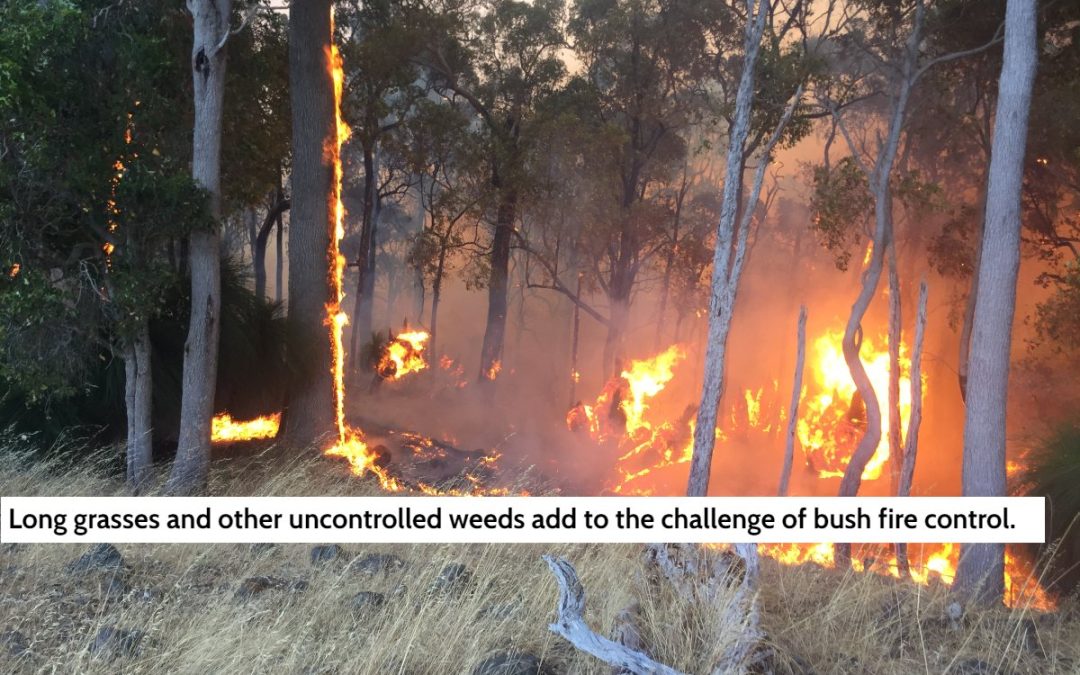Weeds as Fuel for Fire – Some Insights regarding the impact of weeds as an added challenge for fire control as experienced by individuals on the front-line of fire control
In late December through mid-January 2023, fire crews were called to several bushfires within our operational area, including a couple of big blazes in Glen Mervyn & Thompson Brook threatening lives & property. The conditions were ordinary in some fairly ordinary terrain that were beyond the control of fire services, making conditions challenging. These blazes were a running fire ground with blackened earth fingers touching numerous back verandah’s. We offer the following insights regarding the impact of weeds as an added challenge for fire control as experienced by individuals on the front-line of fire control in the past several weeks.
A common theme that united these blazes were weeds!
Fire crews struggled with visibility in metre tall wild oats (Avena fatua) when driving appliances across paddocks. Secondly, tall wild oats were difficult to control in running fire and a challenge to control with spot overs. The biology of wild oats means it is relatively easy to control with a half-life of seed in 6 months equating to 75% depletion after a year. Late Spring slashing is critical here to interrupt the seed cycle with control in under 3 years!
A relatively new emergent in the Donnybrook-Balingup Shire, and rapidly gaining control, is Cleavers (Gallium aparine), also known as “Velcro weed”, which forms a sprawling matrix of stems 1m long that clamber onto native vegetation for support. Its leaves and stems have fine backward facing hooks and seed that attach themselves to sheep, clothes, kangaroos and more, which help disperse the plant widely. Cleavers are an annual plant that reproduces each year from seed and dies off at the end of spring leaving a dense tangle of readily flammable fuel. In Thompson Brook, when fire became engaged with this material, containment lines were lost as dried Cleavers acted like a ladder fuel and wicked up into the canopy and crowned over unburnt ground. This was a dangerous conflagration!
The Leschenault Biosecurity Group (LBG) acknowledges that anything with Carbon (C6) burns in wildfires but the inter spacing between fine fuels (matrix) can exacerbate a serious situation and scale it up a notch or three. The group encourages any landholders wishing to make enquiries about management of weeds to reduce fuel loads to please drop into our Donnybrook office and have that conversation. LBG can provide advice and/or equipment to enable an effective spring weed management job to become a reality.
Local communities have been seriously damaged and threatened by fire and a huge thank you to all those that did an amazing job to get the fire front under control and pitched in wherever they were needed. Well done you!


Recent Comments